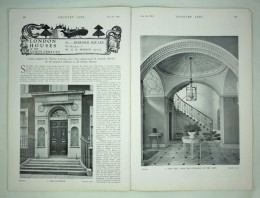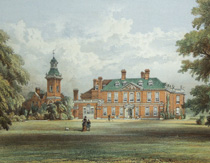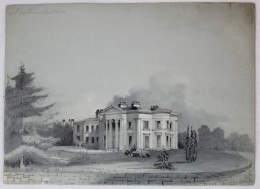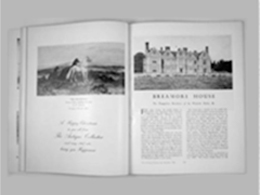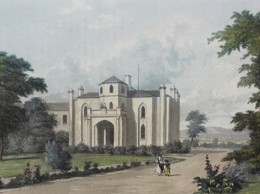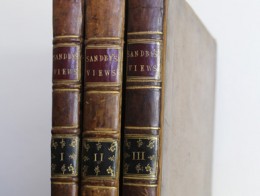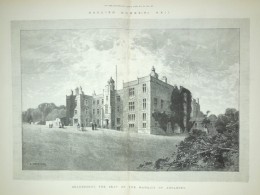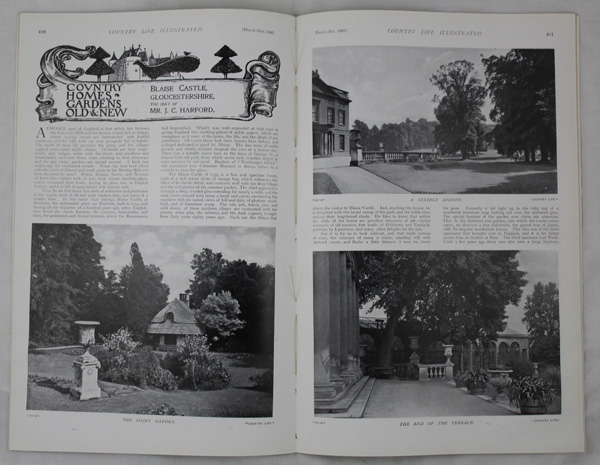
John Nash (1752-1835)
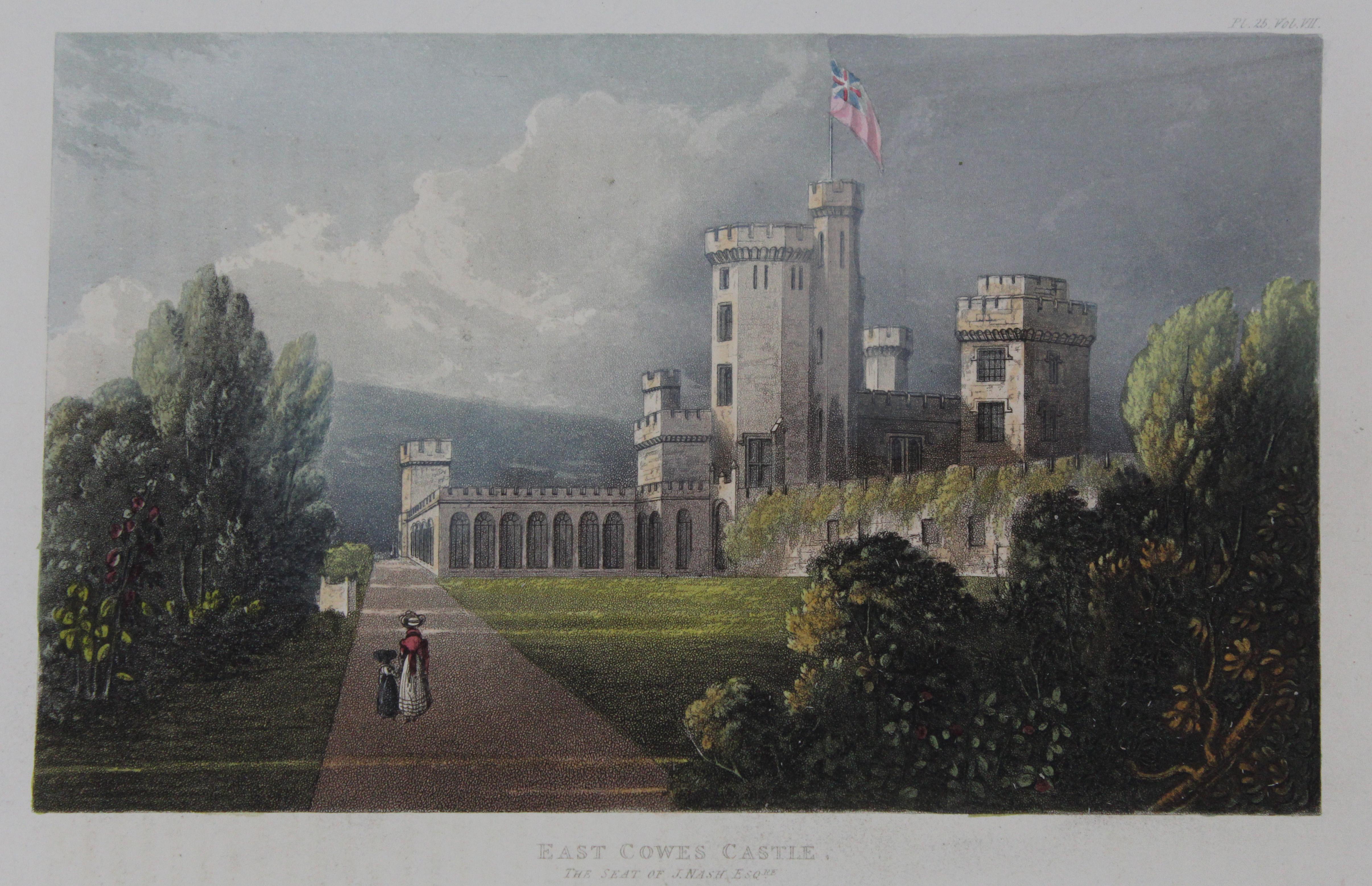 Born in Lambeth John Nash was the son of a Welsh millwright, a heritage that he would hold on to for his entire life, indeed a connection that would eventually lead to his maturing as an architect and help define his renown style.
Born in Lambeth John Nash was the son of a Welsh millwright, a heritage that he would hold on to for his entire life, indeed a connection that would eventually lead to his maturing as an architect and help define his renown style.
Famed for his many London works including Regents Street, Piccadilly Circus, Clarence House, All Souls Church and Buckingham Palace he began his apprenticeship at the age of fourteen with Sir Robert Thomas. After ten years, in 1777 he completed his apprenticeship and proceeded to start his career with money he had inherited while also marrying his first wife Jane Elizabeth Kerr, a mistake he would rue within only a few years.
In 1778 he started to develop properties in Bloomsbury which would prove unsuccessful, this would also be the same year that he would discover that his wife had not only run up very large debts, including a £300 bill for hats, but that the two sons she had born him were actually neither of theirs and that she had faked her pregnancies. The case was brought before the consistory court of the Bishop of London where it was found that she “had imposed two spurious children on him, as his and her own, notwithstanding she had then never born a child”. Jane was then sent to live with a cousin of Nash in Wales. Here she would meet and begin her long running affair with Charles Charles. A year later she would return to live with Nash but soon he would send her back to Wales where she would give birth to Charles’ child. Nash used this to file for separation and Charles was convicted of adultery at a court in Hereford in 1782.
During these early turbulent years of his career, with the developments in Bloomsbury either failing to sell or let and also with his now separated wife’s excessive lifestyle Nash found himself being made bankrupt in 1783.
Leaving London, he moved to his spiritual homeland of Wales and based himself in Carmarthen. First starting with rebuilding the church roof in Carmarthen and then with commissions to build prisons in Carmarthen, Cardigan and Hereford, Nash started to gain a reputation. He would also meet in this period Richard Payne Knight, Sir Uverdale Price and Thomas Johnes who would all influence him with their views of the picturesque movement of the time and ultimately help define his works. During his time in Wales he would build dozens of villas such as Foley House as well as work on various stately homes such as Kentchuch Court and Ffynone House.
In the early 1790’s Nash began work in London again and in 1797 he moved back to the capital and within a year at the age of 46 married the much younger and very beautiful 24 year old Mary Ann Bradley. He also at this time acquired by an unknown means a very large sum of money some of which he used to purchase ground in Cowes, Isle of Wight where he would build his personal residence of East Cowes Castle. It was also at this time through Charles Edward Fox that Nash was introduced to the Prince Regent. Rumours and scandal of the relationship between Nash, his wife Mary and his future patron the Prince circulated, fuelled partially by the five infants that Mary acquired which were not acknowledged as being Nash’s. A cartoon even appeared in one London paper of the King embracing Nash’s half naked wife alluding to how Nash had suddenly gained so much work and such a good reputation with the Crown.
It was now that Nash would desi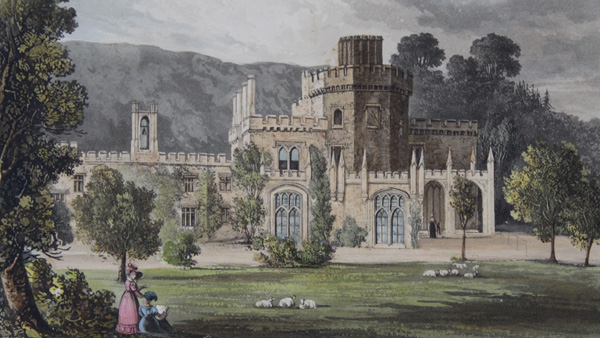 gn some of his greatest country houses in the picturesque style with works such as Luscombe Castle in Devon for the well-known Banker Charles Hoare, Ravensworth Castle in Yorkshire and Caerhays Castle in Cornwall. This time saw the development of his asymmetrical picturesque architectural style which after his work at Blaise Castle lead to the building of Blaise Hamlet in which Nash insisted 'a woman standing in her doorway should not be able to see any of the other nine doors'. Possibly the first example of the garden suburb and described by Pevsner as the “ne plus ultra” of the picturesque movement, the nine small cottages, all unique, would become a blueprint for the quintessential country cottage with the features of thatch, dormer window, brick chimneys, rough stone work and hipped roofs inspiring and influencing for generations to come.
gn some of his greatest country houses in the picturesque style with works such as Luscombe Castle in Devon for the well-known Banker Charles Hoare, Ravensworth Castle in Yorkshire and Caerhays Castle in Cornwall. This time saw the development of his asymmetrical picturesque architectural style which after his work at Blaise Castle lead to the building of Blaise Hamlet in which Nash insisted 'a woman standing in her doorway should not be able to see any of the other nine doors'. Possibly the first example of the garden suburb and described by Pevsner as the “ne plus ultra” of the picturesque movement, the nine small cottages, all unique, would become a blueprint for the quintessential country cottage with the features of thatch, dormer window, brick chimneys, rough stone work and hipped roofs inspiring and influencing for generations to come.
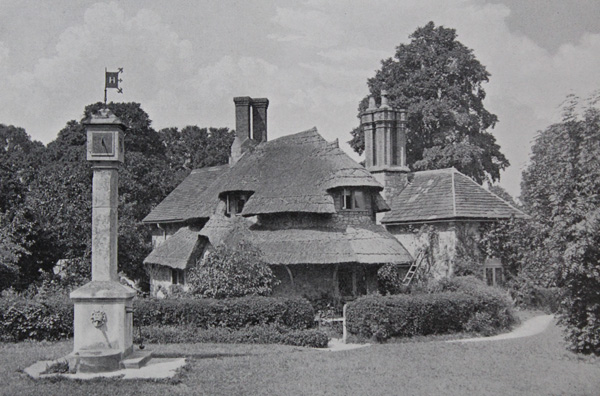 Having already been made Architect to the Surveyor General of Woods, Forests, Parks, and Chases in 1806 his favour with the Prince Regent continued to grow and from 1810 most of his work came through George. The laying out of Regents Street and Regents Park would be his first major commission from the Prince with Nash setting out the plan for over two miles of London, this would be at the time the largest piece of town planning that London had ever known. Later he would design Park Crescent and Park Square whilst also re landscaping St James's Park. Probably his most outlandish project for the Prince Regent would be the development of the Royal Pavilion at Brighton, with its Mughal style architecture and fantastical interiors by Fredrick Crace.
Having already been made Architect to the Surveyor General of Woods, Forests, Parks, and Chases in 1806 his favour with the Prince Regent continued to grow and from 1810 most of his work came through George. The laying out of Regents Street and Regents Park would be his first major commission from the Prince with Nash setting out the plan for over two miles of London, this would be at the time the largest piece of town planning that London had ever known. Later he would design Park Crescent and Park Square whilst also re landscaping St James's Park. Probably his most outlandish project for the Prince Regent would be the development of the Royal Pavilion at Brighton, with its Mughal style architecture and fantastical interiors by Fredrick Crace.
In 1813, alongside Robert Smirke and Sir John Soane he would be made an official architect to the Office of Works which would lead to the construction of the All Souls Church, a building that would not receive universal praise with one reviewer writing “To our eye, the church itself, apart from the tower, (for such it almost is) is perhaps, one of the most miserable structures in the metropolis”.
With the Prince becoming King in 1820 Nash was given yet more commissions including the Royal Muse and Marble Arch. The pinnacle however would be the remodelling of Buckingham House into Buckingham Palace a job that Nash would not complete. In 1830 Nash suffered a stroke and also lost his protector with the death of George IV. The Treasury began to look into the vastly spiralling cost of Buckingham Palace which had more than doubled and the building was still unfinished. Nash was removed from the project and the controversy ended his career.
Retiring to his home of East Cowes Castle, Nash died in 1835 at the age of 83, once again in debt leaving his wife the task of clearing them. She would have to sell his collection of art, books and even his beloved home of East Cowes Castle that had been the venue of many of the extravagant parties Nash was known to throw during the Regatta.
His genius and vision would see him rise to become one of the most influential architects Britain has ever produced. With his developments in London Nash helped define the Regency period but also with his “garden city” and “garden suburb” ideas he left a legacy that would change the planning of not just London but many other cities right up to the present day.

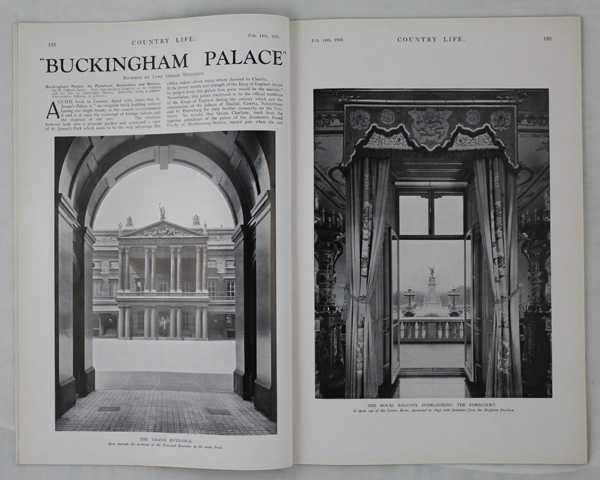
Buckingham Palace, reviewed by Lord Gerald Wellesley


